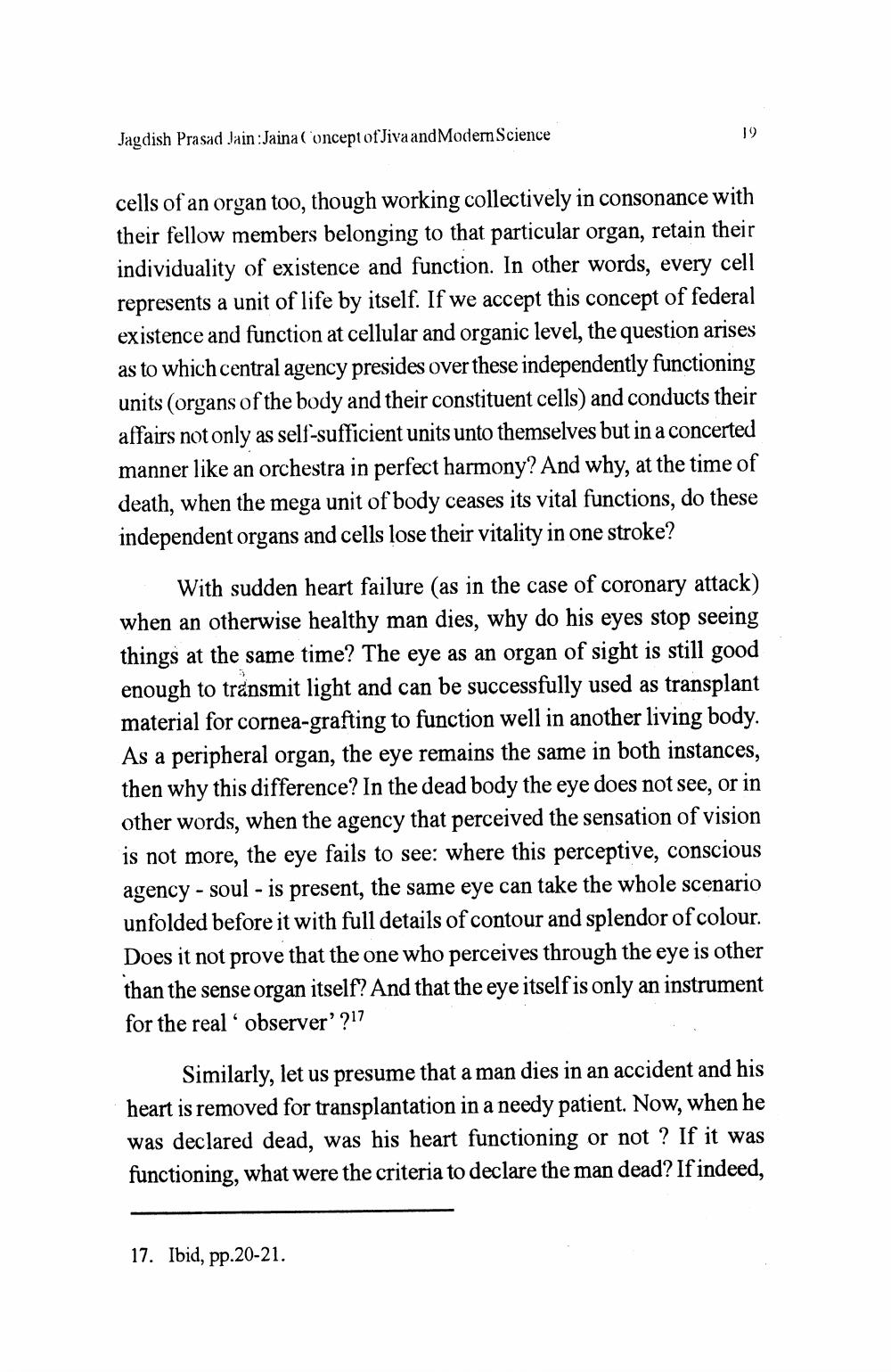________________
Jagdish Prasad Jain: Jaina Concept of Jiva and Modern Science
19
cells of an organ too, though working collectively in consonance with their fellow members belonging to that particular organ, retain their individuality of existence and function. In other words, every cell represents a unit of life by itself. If we accept this concept of federal existence and function at cellular and organic level, the question arises as to which central agency presides over these independently functioning units (organs of the body and their constituent cells) and conducts their affairs not only as self-sufficient units unto themselves but in a concerted manner like an orchestra in perfect harmony? And why, at the time of death, when the mega unit of body ceases its vital functions, do these independent organs and cells lose their vitality in one stroke?
With sudden heart failure (as in the case of coronary attack) when an otherwise healthy man dies, why do his eyes stop seeing things at the same time? The eye as an organ of sight is still good enough to transmit light and can be successfully used as transplant material for cornea-grafting to function well in another living body. As a peripheral organ, the eye remains the same in both instances, then why this difference? In the dead body the eye does not see, or in other words, when the agency that perceived the sensation of vision is not more, the eye fails to see: where this perceptive, conscious agency - soul - is present, the same eye can take the whole scenario unfolded before it with full details of contour and splendor of colour. Does it not prove that the one who perceives through the eye is other than the sense organ itself? And that the eye itself is only an instrument for the real observer' ?17
Similarly, let us presume that a man dies in an accident and his heart is removed for transplantation in a needy patient. Now, when he was declared dead, was his heart functioning or not? If it was functioning, what were the criteria to declare the man dead? If indeed,
17. Ibid, pp.20-21.




